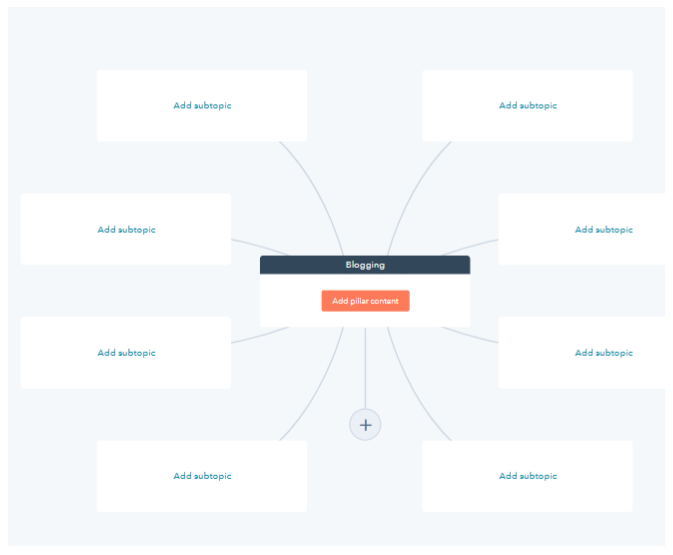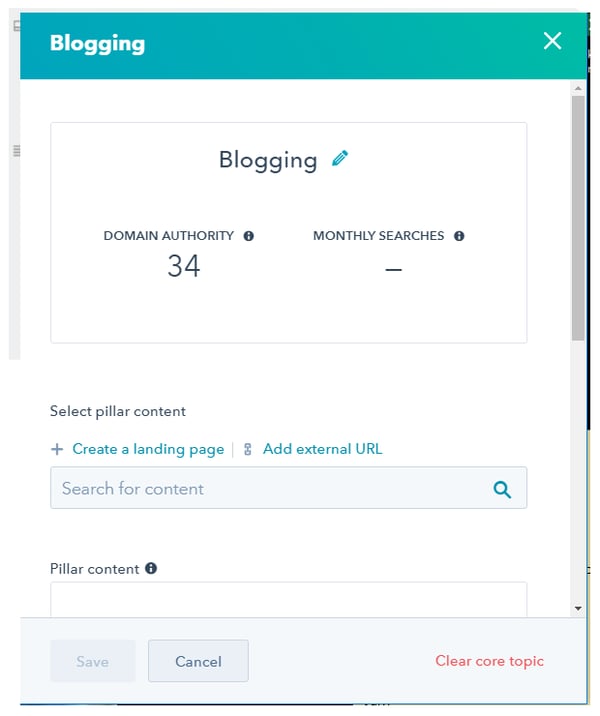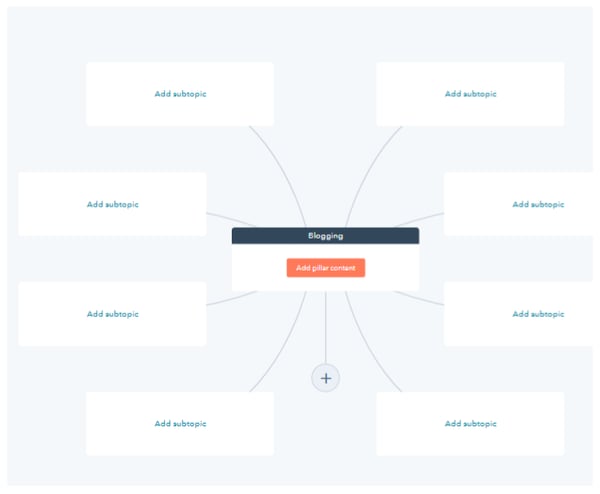
How to Use HubSpot’s New Content Strategy Tool
The way consumers search has changed. As a result, search engines like Google have had to change the way they deliver results to continue to provide the best user experience.
What does this mean for marketers? We need to adjust our search engine optimization and content strategies to keep up with evolving search engine algorithms.
HubSpot, the service provider of all-in-one marketing software, has been experimenting with new strategies to deliver better SEO results. As a result, they’ve recently put an end to keyword optimization and introduced the Content Strategy Tool to help marketers adapt.
What is the Content Strategy Tool? It’s a new feature that helps us focus our strategies on core topics, pillar pages, and topic clusters as opposed to zeroing in on specific keywords in order to better organize our websites.
Here’s how to use HubSpot’s new Content Strategy Tool.
Creating Your Core Topics
Head to your HubSpot portal and you’ll find the Content Strategy Tool under Marketing, then Planning and Strategy. There, on the right-hand side, you’ll see an orange button “Create a topic cluster.” Click on it to create your core topics.
HubSpot will offer core topic suggestions for you that are in line with your business and based on a content audit of your website. You can choose from this list or create your own core topics.
What are core topics?
A core topic is a broad, overarching keyword topic related to your industry. It should have a high monthly search volume, as well as support your main product or service offerings. For example, if you offer content creation services, then your core topics might be “content marketing,” “content creation,” or “blogging.” You can and should have several core topics.
Once you submit your core topic, HubSpot will offer insights into the keyword phrase’s domain authority and monthly searches, if the information is available.

Creating Pillar Content
Once you’ve submitted your core topic, you’ll see a button underneath it entitled “Add pillar content.” This is where you’ll add your pillar page URL.
What is a pillar page?
A pillar page is an in-depth webpage that covers every aspect of your core topic—including the who, what, where, why, when, and how. The pillar page should answer readers’ questions, link to other blog posts on the topic, include CTAs, and offer value to anyone searching the topic. It’s also the page the rest of your content and blog posts will hyperlink to in order to create the web of content, or topic clusters, that helps you better organize your website. For pillar page best practices, check out this infographic.

Creating Your Subtopics
Now, it’s time to add your subtopics.
What are topic cluster subtopics?
Each core topic should contain a minimum of 6 and a maximum of 20 subtopics. These subtopics should be related to your core topic and pillar content but offer more in-depth insights addressing specific questions readers might have. For our core topic example “blogging,” some subtopics may include “the cost of blogging, “the benefits of blogging,” and “blogging best practices.”
Once you choose your subtopics, HubSpot’s Content Strategy Tool will let you know how closely they relate to your core topic, as well as the domain authority and monthly search volume to see if they’re a good fit.
Creating Topic Clusters
Finally, you’ll start to create supporting content for your core topic and attach your blog posts, landing pages, or other webpages to your subtopics. Make sure these pieces of supporting content link back to your pillar page. This will effectively add the links connecting the subtopics to the core topic, creating the organized “web” of content on your website or the “topic cluster.” Need help getting started? You can use this topic cluster creation template.

There you have it! These are the key steps to using HubSpot’s new Content Strategy Tool.

CEO and Chief Revenue Scientist
Mike Lieberman, CEO and Chief Revenue Scientist
Eliminate Hit-or-Miss Marketing Moves
Get advice, tips, tools and guidance to generate more leads for your company in this weekly email newsletter.



Eliminate Hit-or-Miss Marketing Moves
Get advice, tips, tools and guidance to generate more leads for your company in this weekly email newsletter.













